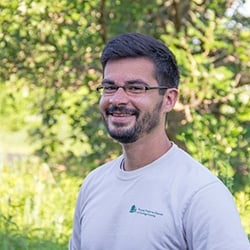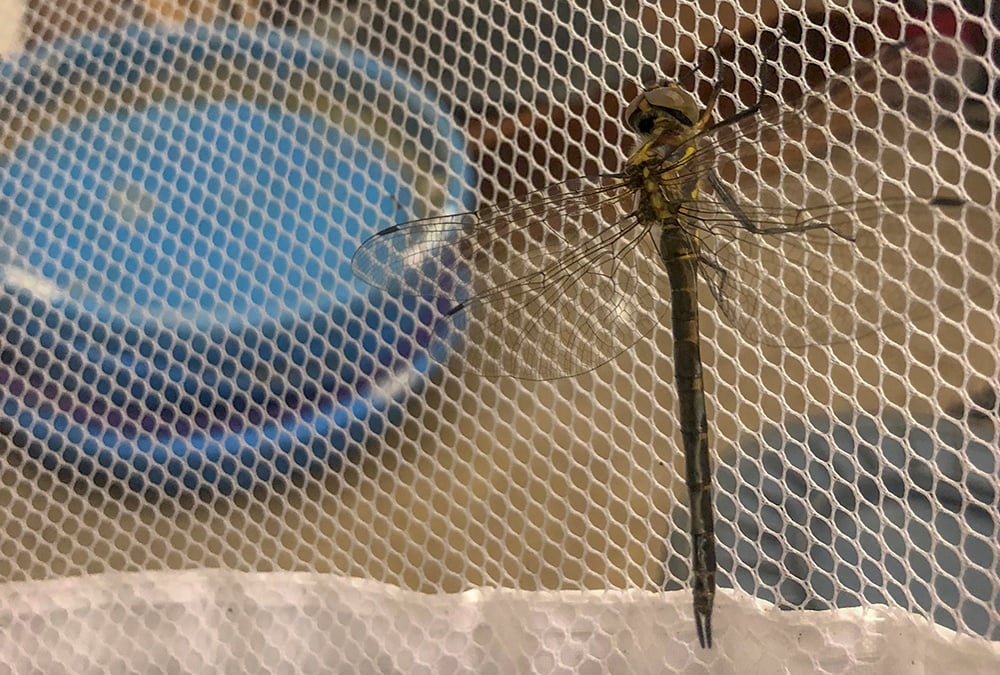
The events of 2020 have been a great lesson for many aspects of my life. At the top of the list, I have gained an even greater appreciation for the work I do to help the natural areas of DuPage County. I have also learned to find satisfaction working independently, and, at the same time, to never take working with others for granted. These lessons came to light in the course of conducting our Hine’s Emerald dragonfly and devil crayfish captive-rearing program this summer.
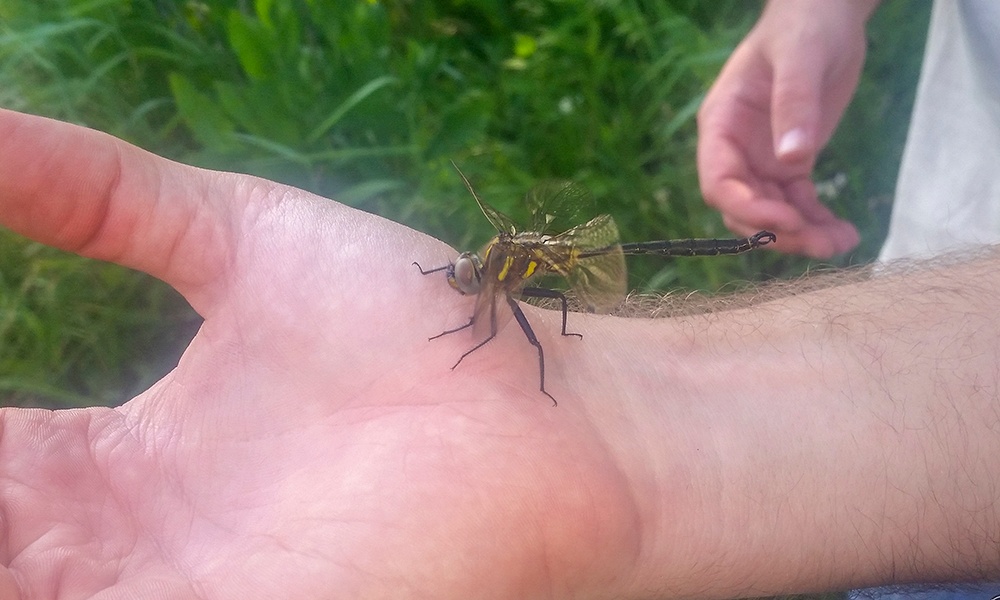
Photo courtesy of Barbara Sherwood
Since its beginnings in 2016 — when the District won a Section 6 Endangered Species grant from the U.S. Fish and Wildlife Service — this program has been a story of partnerships. The partnerships are between the District, the Illinois Department of Natural Resources, the U.S. Fish and Wildlife Service, and the University of South Dakota. While all of these partners play a role, our program especially relies on the expertise of USD to be successful.
Hine’s Emerald dragonfly rearing is complex but can be simplified to a four-step process:
Step 1: Gather dragonfly eggs from adult female dragonflies in the wild
Step 2: Hatch those eggs and manage the very small, very fragile “hatchlings”
Step 3: Continue raising the significantly larger and sturdier aquatic larvae for 2 to 4 years
Step 4: Allow the larvae to emerge as adults and release them back into the wild
Currently, the District is most heavily involved in steps 2 and 3, raising these larvae at our Urban Stream Research Center at Blackwell Forest Preserve. We depend on USD to accomplish steps 1 and 4, as their staff are experts in finding, capturing, and releasing the dragonflies. After all, the entire rearing program can only happen if you have animals to rear and animals to release!
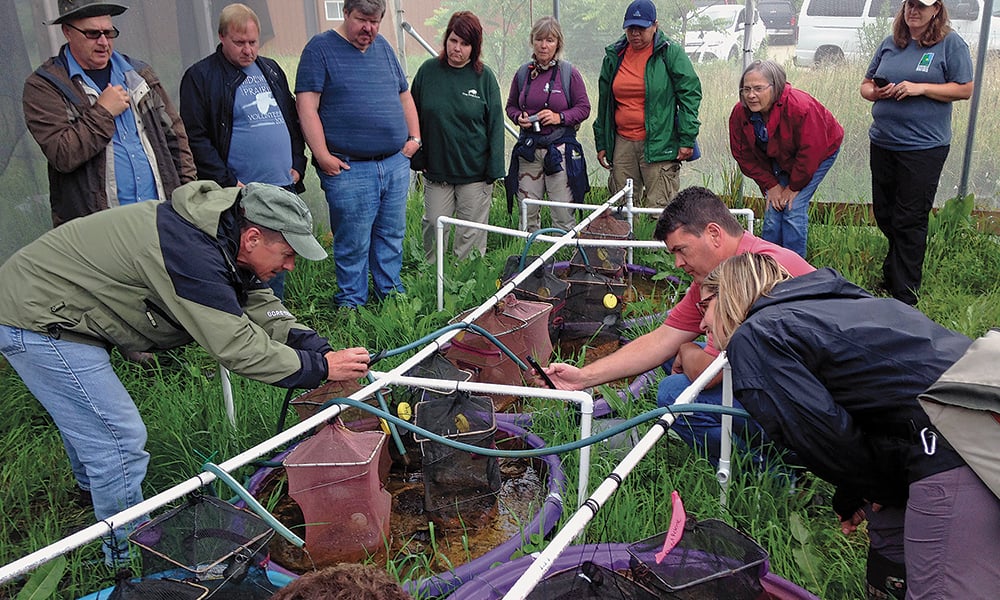
In the past four years of our captive-rearing program, USD staff have collected about 13,000 Hine’s Emerald dragonfly eggs in Illinois, hatching many of those eggs themselves and also distributing eggs and larvae to partner agencies, including the Urban Stream Research Center and Genoa National Fish Hatchery, a U.S. Fish and Wildlife Service facility.
While this seems like a large number of eggs (and it is), it’s important to remember that natural survival rates for the species are usually less than 1%. Even in the laboratory, where there are no natural predators, survival rates are often below 20%. In other words, a large number of eggs doesn’t necessarily translate to a large number of reared and released animals.
In fact, university staff have released about 150 adult dragonflies into Illinois habitats since the beginning of this program, averaging about 35 per year. Although this number may seem small, it actually represents a huge increase for the Illinois population. Releasing just 35 individuals a year is a full 10-15% increase for the entire annual Hine’s Emerald dragonfly population of Illinois!
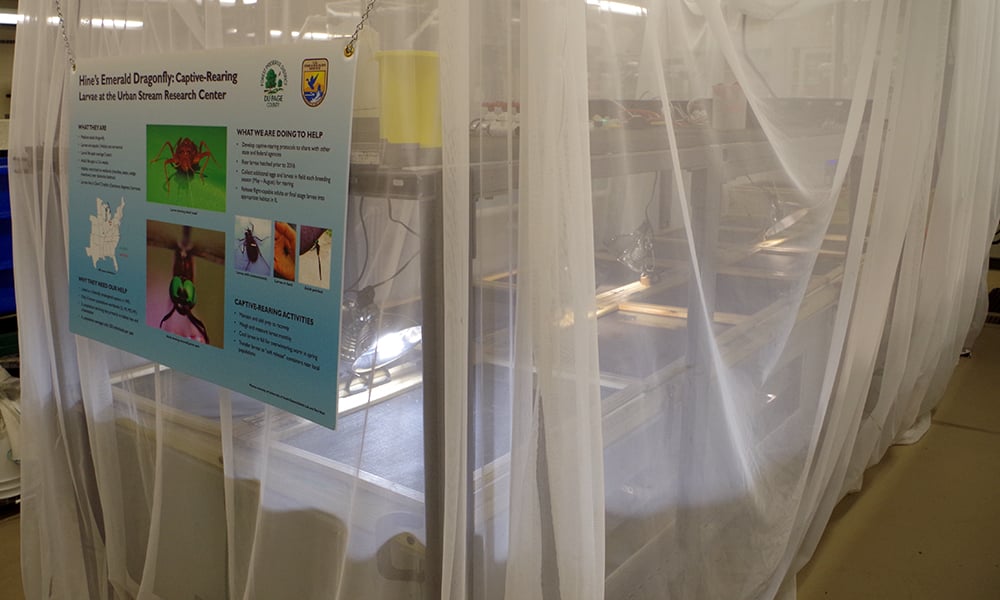
As with other events in this year full of surprises, the release of dragonflies looked very different than it has in previous years of the program. USD staff are normally in Illinois when the larvae begin to emerge as adults and typically transport the insects to release sites within a day of their emergence. This year, though, travel restrictions prevented USD staff from being in Illinois during this critical time.
So the partner agencies agreed to go to the extreme measure of shipping 24 Hine’s Emerald dragonfly larvae from the university lab in South Dakota to the Forest Preserve District. I then transported and released the larvae to habitat near the Des Plaines River.
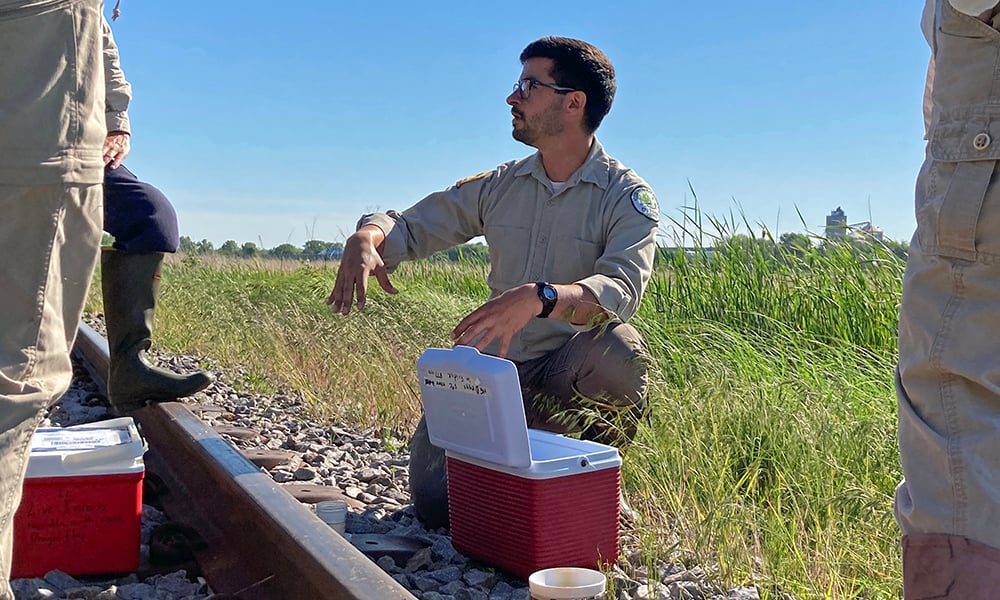
Photo courtesy of Forest Preserve District of Will County
While this workaround was successful and all larvae were released without harm, this scenario illustrates the importance of our partnerships. It goes without saying that when working to help a federally endangered species recover, shipping live animals is less than ideal.
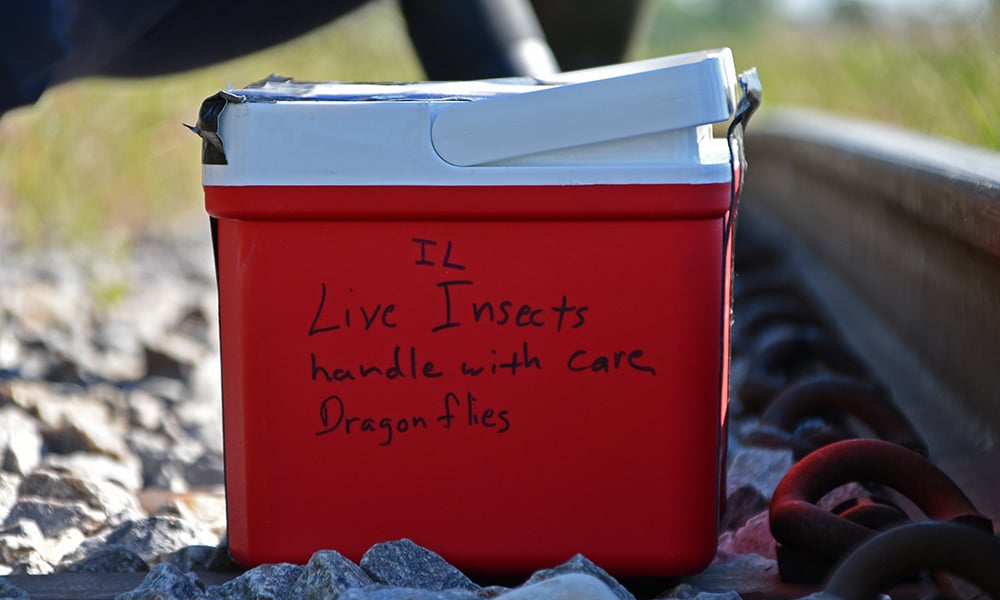
Photo courtesy of Forest Preserve District of Will County
Since 2018, we’ve also been rearing devil crayfish, as Hine’s Emerald dragonfly larvae live exclusively in the burrows of this species. The Forest Preserve District has taken the lead on this part of the rearing program. In the 2019 and 2020 breeding seasons, we were able to collect “berried” female devil crayfish, or those carrying eggs; hatch the eggs; and raise the subsequent juvenile crayfish at the Urban Stream Research Center.
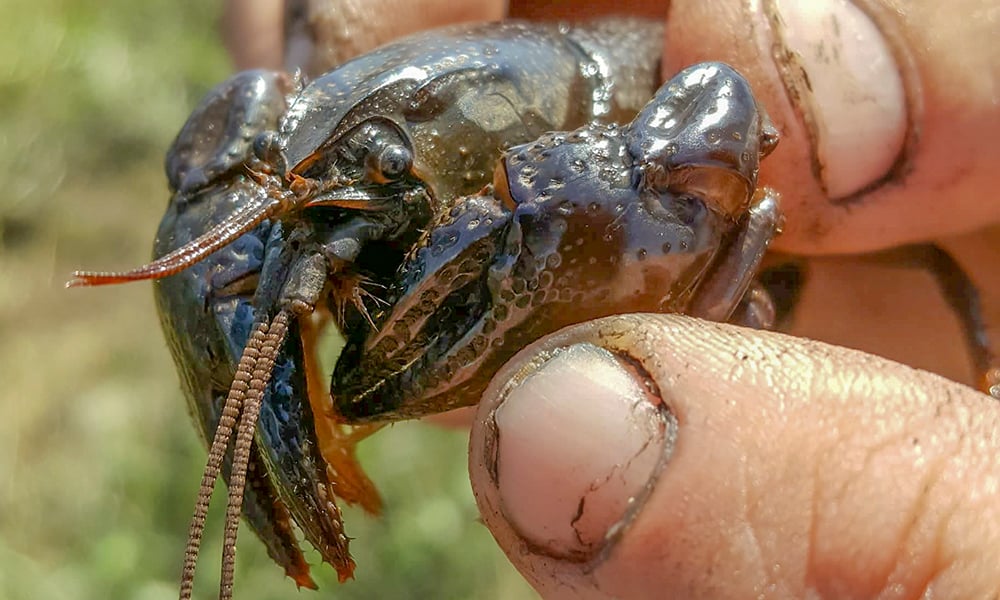
Even though we’ve taken the lead on several aspects of this project, its success still depends on our partnerships. Many particulars of the program – such as where, when and at what size to release the crayfish and how to make sure they build burrows where we want them to so they can be used by Hine’s Emerald dragonfly larvae – are better suited for a research institution like USD. In fact, USD staff are currently designing a series of experiments to answer some of those very questions.
This project has been a joy to work on for the past four years, and 2020 didn’t change that. I look forward to working with these species and our partners for years to come. But, I’ll do so with a renewed appreciation for our efforts to preserve the natural areas and species of DuPage County. I’ll continue to value the times I work independently, and I’ll most definitely value the importance of and opportunity to work with others (even at a social distance).
Andres Ortega
